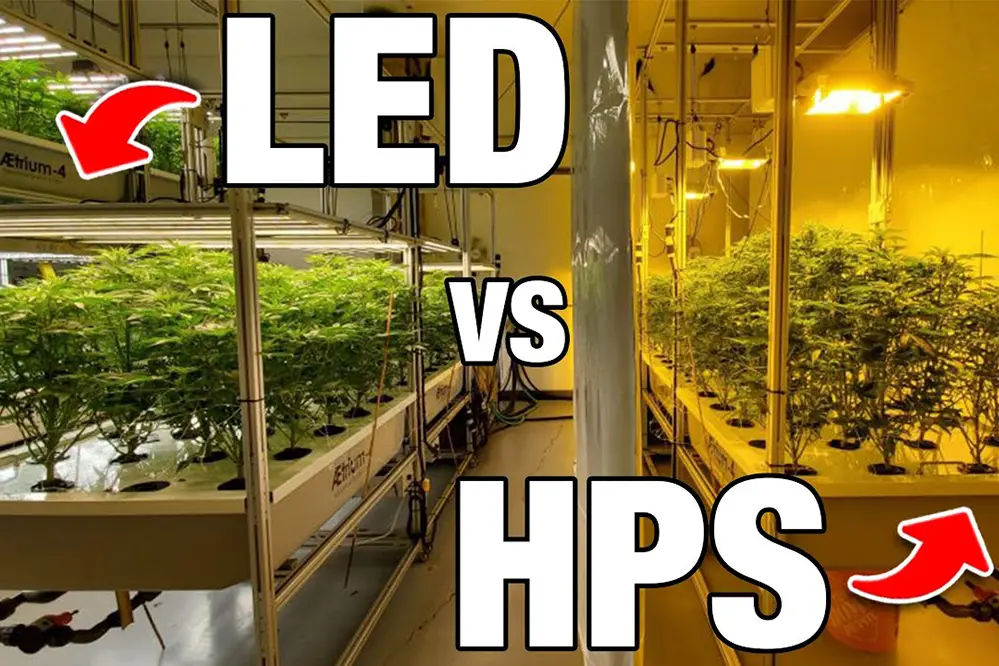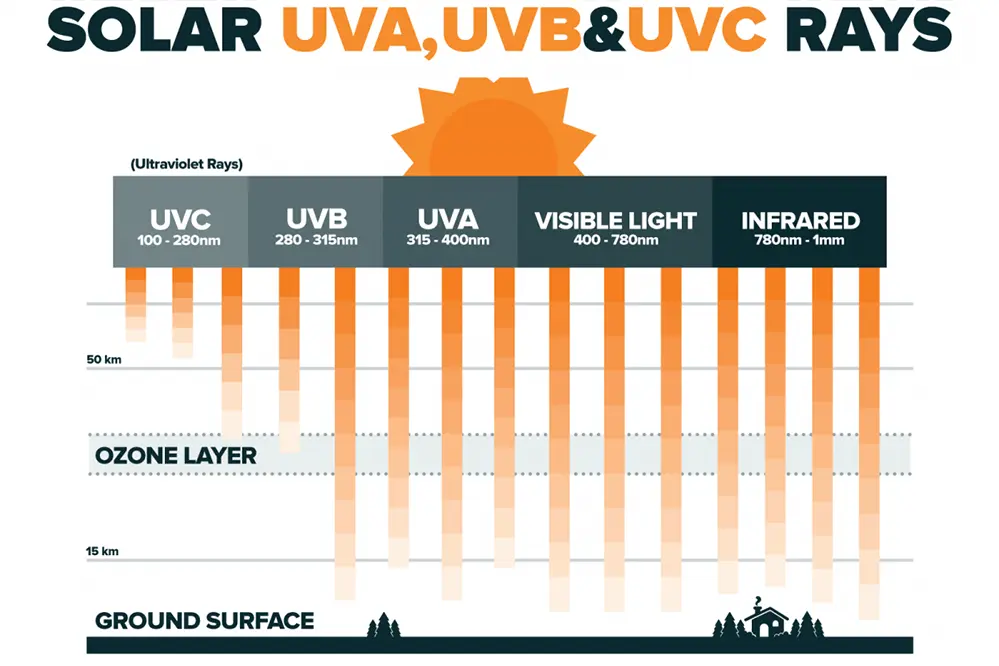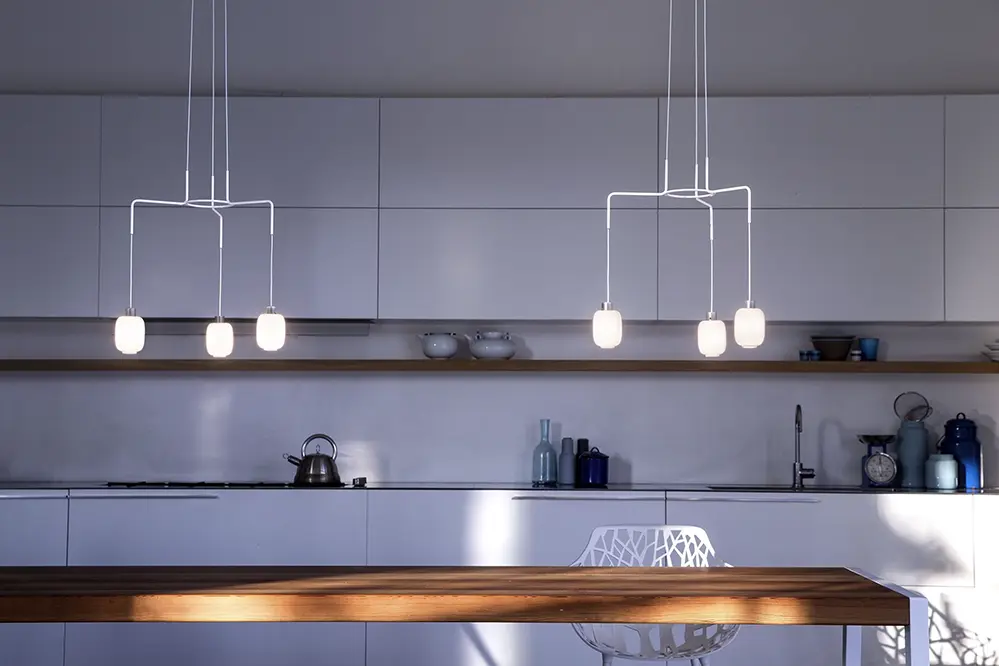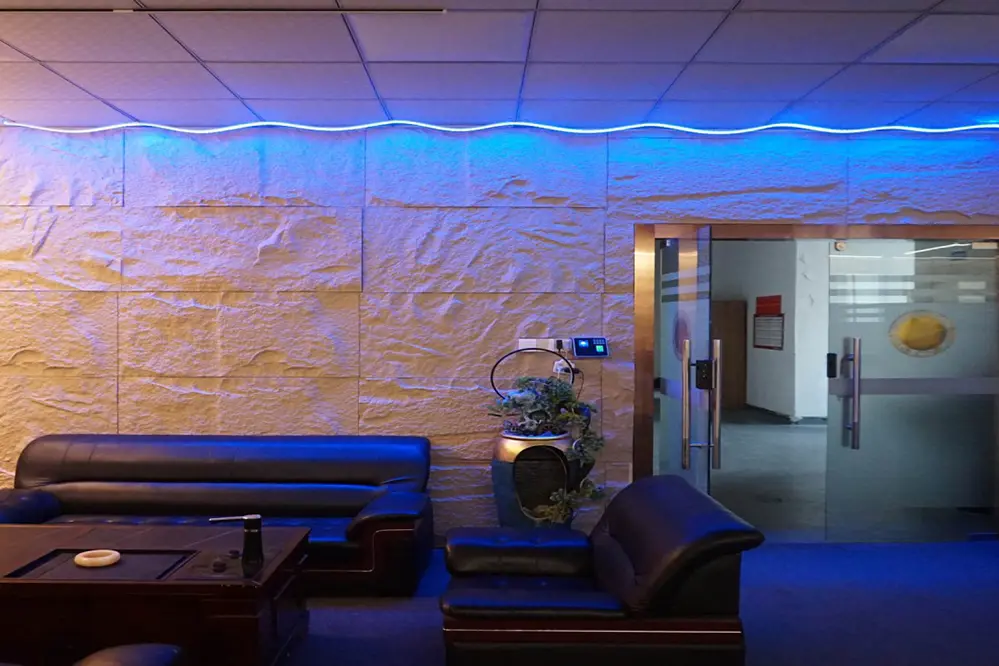In the world of indoor gardening, the choice between LED grow lights and HPS can be as pivotal as selecting the right seeds. Imagine a passionate gardener named Alex, who once struggled with lackluster plant growth despite his best efforts. After switching from traditional HPS to modern LED grow lights, Alex witnessed a transformation in his indoor garden, with plants thriving like never before. This story is not unique; it highlights the profound impact lighting choices can have on plant health and yield.
Understanding the differences between LED grow lights and HPS is crucial for any indoor gardener aiming for success. Did you know that LED lights can be up to 50% more energy-efficient than HPS lights? This surprising statistic underscores the importance of making informed decisions about your lighting setup. As energy costs rise and environmental concerns grow, choosing the right lighting solution becomes even more significant.
As you embark on this comparative guide, prepare to uncover the nuances and benefits of each lighting option. Whether you’re a seasoned grower or a curious beginner, this article promises to illuminate the path to a more fruitful indoor gardening experience. Dive in to discover which lighting technology will best serve your green ambitions.
Understanding LED Grow Lights
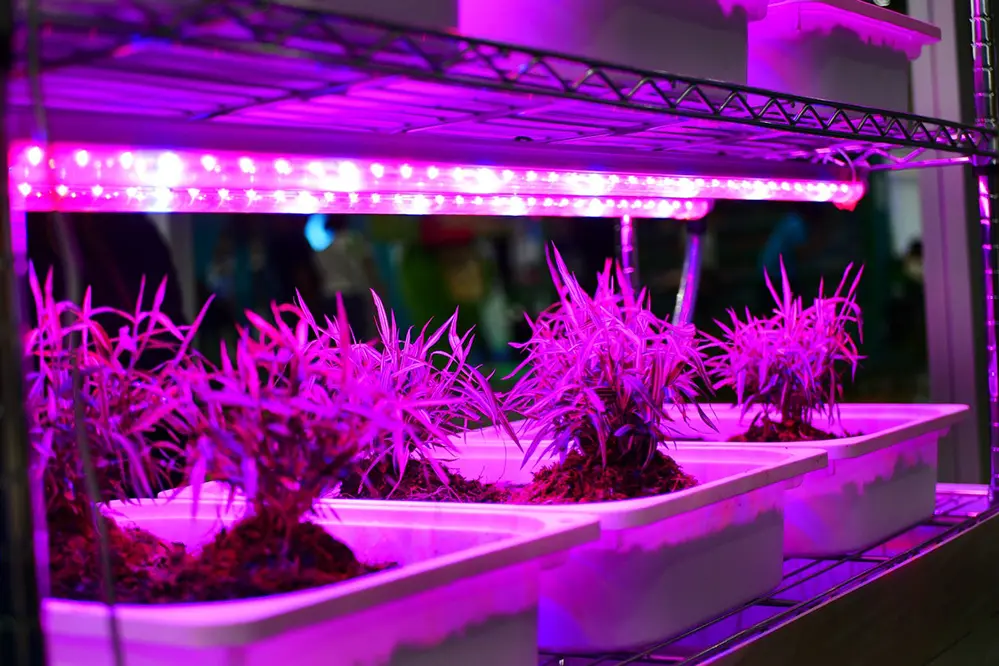
LED grow lights represent a monumental leap in indoor agriculture, offering innovative solutions that drive sustainable and efficient plant cultivation.
These lights leverage advanced technology to deliver a tailored spectrum specifically designed to optimize photosynthesis, thereby enhancing plant growth. By emitting targeted wavelengths that plants use most efficiently, LED lights reduce energy consumption and operational costs significantly. This incredible efficiency of LED grow lights translates into a minimized environmental footprint, aligning with the growing demand for eco-friendly farming solutions.
Moreover, LED grow lights have an impressively long lifespan, reducing the frequency and cost associated with replacements. As a result, growers can focus on optimizing their crops’ health and yields without worrying constantly about maintenance interruptions. This reliability, combined with their ability to operate at lower temperatures, minimizes the risk of heat damage to sensitive plant species.
By embracing the capabilities of LED grow lights, modern growers are not only witnessing augmented growth rates and enhanced crop quality but are also pioneering a new era in sustainable farming. LED technology empowers cultivators to explore new possibilities, experiment with various plant species, and ultimately elevate the standards of agricultural productivity.
Understanding HPS Grow Lights
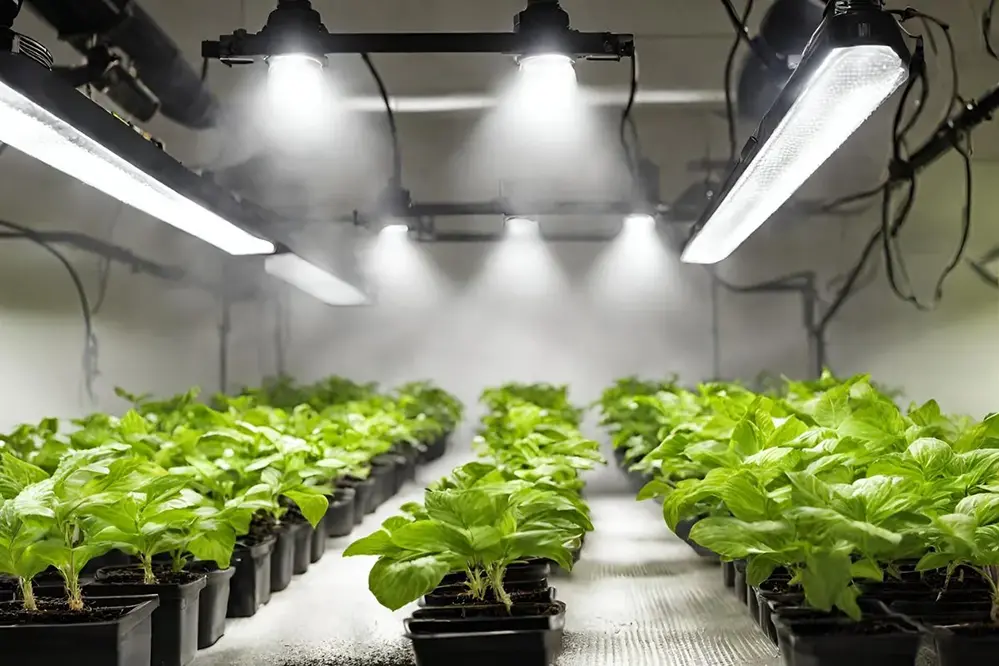
High-Pressure Sodium (HPS) lamps, cherished for their intense light output and consistent performance, have long anchored growing environments with reliable efficiency and vibrant results.
Initially introduced in commercial agriculture as a powerful lighting solution, HPS grow lights quickly gained popularity for their capacity to support large-scale operations. Their notable strength resides in the concentrated high-lumens output, which is particularly beneficial for flowering and fruiting stages. While HPS lights represent an established technology, they come with distinctive features and benefits that have sustained their use across various horticultural settings.
Specifically, HPS lamps are celebrated for their high intensity and red-spectrum light, which plants utilize exceptionally during critical growth phases. In numerous cases, the deep-red light spectrum delivered by HPS has led to bountiful harvests, demonstrating their inherent value to both large commercial and more modest indoor gardens.
Yet, understanding the full range of HPS capabilities and their impact goes beyond intensity. These lights also necessitate careful management, as they generate substantial heat, which can affect nearby plants if not controlled properly. Nevertheless, with the dawn of modern agricultural advances, HPS remains a formidable option for growers aware of their unique characteristics, consistently proving their worth in the lexicon of cultivation tools.
How Do LED Grow Lights Compare to HPS?
When evaluating LED grow lights against their HPS counterparts, a mosaic of encouraging technological advantages emerges. LEDs are renowned for their energy efficiency and spectrum versatility, offering an eco-friendly and adaptable alternative to traditional methods.
With efficiency at the forefront of a grower’s mind, LEDs shine as a “smart choice.” The ability to tailor spectral outputs to specific plant needs is a testament to their innovation. In this era, the evolution of LED technology not only optimizes growth but also minimizes energy consumption, signaling an exciting future for sustainable agriculture. Whether for the technological novice or the seasoned cultivator, LEDs illuminate a pathway to prosperous yields and ecological stewardship.
Light Intensity and Spectrum
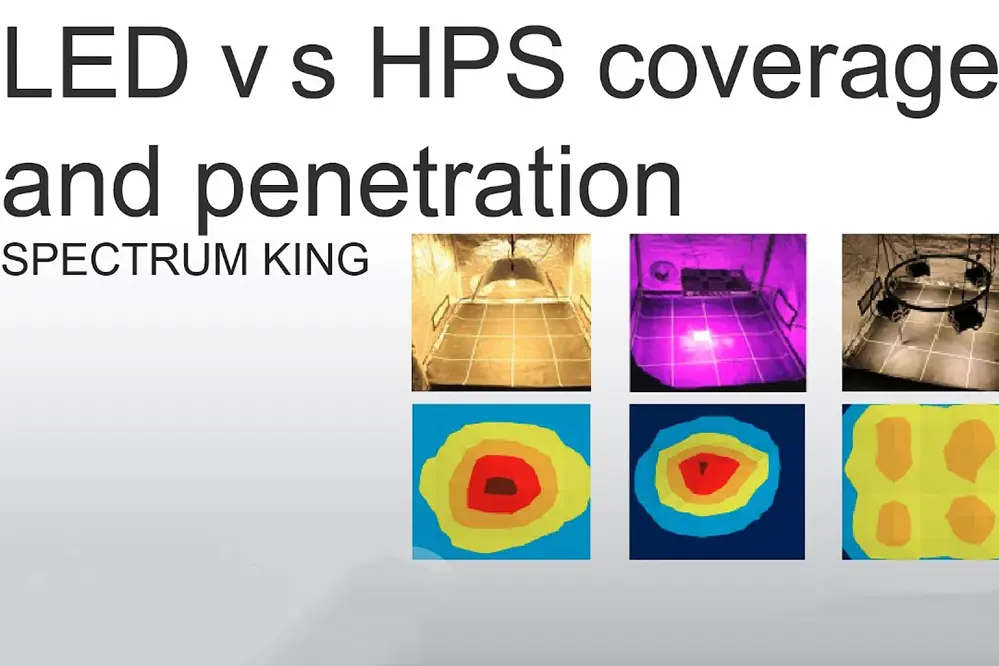
Harnessing the potent capabilities of both light intensity and spectrum, LED grow lights dynamically propel plants toward impressive growth.
LED grow lights can provide full-spectrum light, closely emulating sunlight and enhancing plant growth and vitality.
As advancements in lighting technology soar, LED grow lights empower cultivators with a spectrum control that HPS lights lack. This allows tailored light conditions, maximizing both photosynthesis and growth phases.
HPS lights, while powerful in intensity, operate within a narrow light spectrum. LEDs, by contrast, offer a broad-spectrum solution that revolutionizes the way growers can nurture their crops.
Energy Efficiency
In today’s rapidly evolving world, energy efficiency is paramount, reshaping agricultural practices for a sustainable future.
When it comes to energy efficiency, LED grow lights stand as a magnificent breakthrough within the horticultural realm. They are designed to convert electricity into light with minimal energy loss, enabling growers to produce stellar outcomes at lower energy consumption rates compared to traditional lighting solutions. LEDs illuminate with outstanding efficiency, driving down operational costs and contributing to a reduced carbon footprint in growing environments.
High-Pressure Sodium (HPS) lights, while known for their intensity, fall short in energy efficiency when juxtaposed with their LED counterparts. Despite delivering strong light outputs, HPS systems dissipate considerable energy as heat, presenting inefficiencies in both energy use and environmental control.
Ultimately, LED grow lights embody a paradigm shift toward sophisticated energy management, harmonizing high-efficiency performance with environmental responsibility. This progressive technology not only benefits the grower’s bottom line but also aligns with the global imperative of reduced energy consumption. By choosing LEDs, cultivators embrace a forward-thinking approach that promises not only impressive yield but a profound contribution to sustainability in agriculture.
Heat Output
Heat output is a crucial consideration for growers.
LED grow lights distinguish themselves by their relatively low heat emissions. This unique feature reduces the need for extensive cooling systems, which can often be a significant overhead in agricultural setups. Consequently, minimal heat production by LEDs translates to lower energy expenditures and a more controlled growing environment.
HPS grow lights, however, generate substantial heat.
The excess heat output of HPS lights means that cultivators must invest in – and carefully manage – additional cooling measures to ensure their plants thrive without stress. This energy-intensive cooling often complicates the growing process.
In contrast, the lower heat output of LED grow lights not only simplifies environmental management but enhances operational efficiency. As agriculture increasingly turns towards sustainable practices, the reduced thermal impact of LEDs makes them a compelling choice, promising both optimal plant growth and reduced energy usage, ultimately paving the way for a brighter, greener future in cultivation.
Installation and Setup
When considering the installation and setup of grow lights, LED systems often stand out for their user-friendly nature. With their plug-and-play design, they simplify the installation process, allowing cultivators to adjust the lighting easily.
In contrast, HPS grow lights require more comprehensive setup, including additional cooling systems, for effective operation.
Ease of Use
Navigating the complexities of grow lights can be daunting, but choosing wisely could transform plant cultivation.
LED grow lights offer sheer convenience; their lightweight design enables effortless installation and manipulation. For those venturing into the world of cultivation or veterans seeking to streamline operations, LEDs are a gem that emerges as a steadfast ally in ensuring optimal plant care.
Adjustability is another feather in the cap for LEDs. With sophisticated digital interfaces, users benefit from customizable spectrum settings, facilitating tailored plant growth across different stages. This flexibility significantly reduces manual oversight, freeing cultivators to focus on other aspects of their gardening endeavors.
HPS grow lights, while traditionally favored for robust light intensity, demand more involvement. They require precise distance calibration and environmental monitoring to prevent overheating. This often necessitates cumbersome equipment adjustments, which can deter beginners.
Ultimately, LED’s simplicity makes them ideal for beginners, while HPS demands expert handling.
Space Requirements
When considering space requirements, both LED and HPS grow lights offer unique advantages that cater to different cultivation setups.
- LED grow lights are generally more compact.
- They can be positioned closer to plants without heat concerns.
- HPS grow lights need more space for adequate heat dispersion.
- HPS setups might require additional space for cooling equipment.
Selecting the right lighting system depends largely on the available space and specific needs of your growing environment.
LED grow lights, with their compact form and cooler operation, tend to be ideal for smaller grow areas and confined spaces.
Lifespan and Durability
LED grow lights excel in longevity, a hallmark of contemporary innovation, lasting tens of thousands of hours. Their sturdy design with fewer fragile components confers an impressive resilience that assures growers their investment will withstand the test of time, regardless of frequent use and manipulation.
In contrast, while HPS grow lights can offer a bright promise with their “golden hue,” they are often likened to a candle in the wind, enduring significantly shorter lifespans. On this front, the robustness of LEDs prevails, providing a reliable alliance that maximizes output and minimizes replacement hassles, paving the way for a more sustainable and economically viable cultivation journey.
Maintenance Needs
LED grow lights shine in simplicity, offering maintenance ease due to their robust and efficient design.
These lights come with fewer components prone to failure, which translates into a lower likelihood of needing replacements or repairs. LEDs typically require minimal cleaning due to their minimal heat output, thus reducing dust accumulation.
Routine inspections ensure their long-term efficiency, though they seldom demand immediate attention or intervention, attesting to their low-maintenance appeal. This is advantageous for growers seeking to minimize time spent on upkeep, allowing focus on plant care.
HPS grow lights, however, necessitate more frequent maintenance if optimal performance is to be sustained. Bulbs must be replaced regularly due to their shorter lifespan, and the fans or cooling systems used to manage heat output require regular inspections.
Overall, LEDs provide a more hands-off experience, offering sustainability with minimal maintenance demands.
Long-term Performance
LED grow lights excel in durability and energy efficiency, ensuring consistent results over extended periods. Their longevity is unparalleled, because they generally last much longer than HPS bulbs, which require frequent replacements.
- Longevity: LEDs can last upwards of 50,000 hours, significantly outliving HPS bulbs.
- Energy Efficiency: LEDs convert more energy into light, minimizing heat loss.
- Consistency: Provides steady light output with minimal degradation over time.
- Sustainability: Lower energy and replacement needs contribute to environmental conservation.
- Cost-effectiveness: Long-term savings on electricity and replacement costs compared to HPS.
HPS grow lights, while initially cheaper, incur higher ongoing costs due to bulb replacements and increased energy consumption. They often lose efficiency faster over time.
The robust nature of LEDs translates into less waste, reducing environmental impact significantly. They represent a forward-thinking choice in sustainable horticulture.
Cost Analysis
The initial investment in LED grow lights might be higher than HPS alternatives. However, the long-term financial landscape paints a different picture of value and efficiency appreciation. When considering the operational costs, LEDs emerge as a superior investment: reduced energy consumption and infrequent replacements yield significant savings over extended periods, shifting the balance in favor of forward-thinking horticulturists. This distinct comparison underscores that the initial costs are merely a fraction of the total value harvested through sustained operational excellence.
Initial Investment
Investing in grow lights involves evaluating not only the immediate expenditure but also the long-term financial implications.
- LED Grow Lights: Typically, the initial cost is higher, reflecting advanced technology and a longer lifespan.
- HPS Grow Lights: Often less expensive upfront, but require frequent bulb replacements and higher power costs.
- Durability and Efficiency: LEDs offer robustness and efficiency that can offset the initial investment over time.
- Market Trends: LED technology continues to advance, potentially leading to decreasing initial costs in the future.
While LED grow lights demand a higher initial outlay, they promise returns through energy savings and longevity.
Examining the initial investment holistically ensures a decision that aligns with both immediate budget constraints and future profitability.
Operating Costs
When considering the operating costs, one must account for the ongoing expenditures that impact the profitability of the grow operation.
LED grow lights are renowned for their energy efficiency and reduced heat output, which translates to lower electricity bills and cooling requirements, significantly decreasing operational expenses over time. This efficient energy usage not only diminishes monthly utility costs but also curtails the wear and tear on ancillary cooling systems, fostering a more sustainable and profitable growing environment.
Conversely, HPS grow lights, while initially cheaper, consume considerably more energy and generate a substantial amount of heat. This excess heat necessitates additional ventilation and cooling strategies, contributing to higher operational costs and presupposing an increased environmental impact due to greater energy consumption.
Embracing LED grow lights can be seen as a forward-thinking move, potentially reducing annual energy expenditures and prolonging the lifespan of related equipment. These innovative lighting systems empower growers with not only economic advantages but also environmental sustainability, underpinning a future-oriented strategy that aligns operational efficiency with ecological consciousness, and setting a new standard in modern horticulture.
Impact on Plant Growth
LED grow lights, renowned for their advanced technological capabilities, offer a spectrum of light that closely mimics natural sunlight. This enables plants to photosynthesize more effectively, resulting in robust growth, enhanced yield, and improved quality of produce. The customizability of LED lights allows fine-tuning to match the specific needs of various plant species, giving growers the flexibility to optimize production outcomes.
By contrast, HPS grow lights have long stood as the stalwart of horticultural lighting due to their intense light output and proven efficacy in promoting plant growth. However, their fixed spectrum limits their adaptability to the specific needs of diverse plants, potentially leading to compromised growth outcomes. In a rapidly evolving field where precision growing is vital, the ability of LED lights to offer tailored light recipes marks a significant leap towards achieving optimal growth conditions and pushing the boundaries of traditional agricultural practices.
Yield and Quality
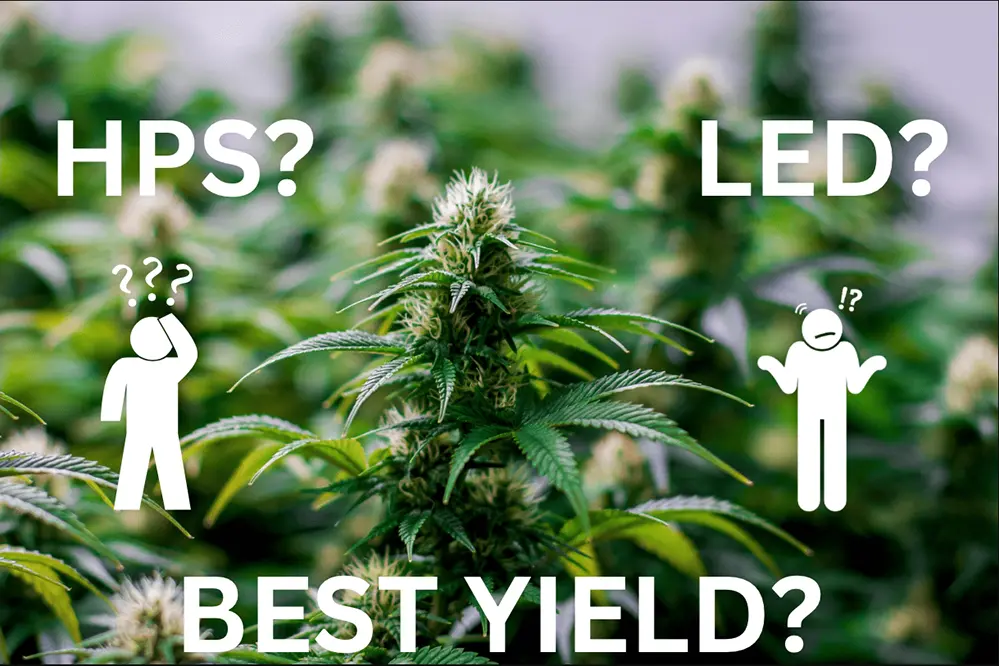
When comparing the yield and quality outcomes of LED and HPS grow lights, there are significant differences to consider.
- Light Spectrum: LED grow lights provide a customizable spectrum that enhances photosynthesis, leading to higher yields and superior produce quality.
- Energy Efficiency: LEDs are more energy-efficient, reducing operating costs, which can translate into improved yield productivity over time.
- Heat Output: LEDs produce less heat, minimizing plant stress and enhancing quality, whereas HPS lights can cause potential heat stress.
- Longevity: LED lights have a longer lifespan, ensuring consistent light quality and yield stability across multiple growth cycles.
The adaptability of LED grow lights makes them a compelling choice for achieving high yield and quality. They enable precision in tuning the light environment to meet plant needs.
Consequently, growers utilizing LED technology often report an advancement in both crop quality and yield, shaping a promising future for horticultural innovation.
Growth Cycle Adaptability
The flexibility of grow lights through different growth stages holds paramount importance for maximizing plant potential.
- Seedling Stage: LEDs offer precise control over wavelength, fostering optimal photosynthesis without overwhelming young plants.
- Vegetative Growth: Adjustable intensity in LEDs promotes robust leaf and stem development, crucial for long-term health.
- Flowering Stage: Tailorable spectrums in LEDs help maximize flowering yield, vital for fruits and flowering plants.
- Transition and Harvest: LEDs facilitate smooth transitions between growth phases, enhancing overall harvest quality.
LED technology allows seamless adjustments to light conditions, catering precisely to each development stage.
Such adaptability ensures that plants experience less stress, thereby boosting yield and vitality across the growth cycle.
Environmental Considerations
LED grow lights, a beacon of technological advancement, shine with eco-friendly attributes. Their energy efficiency significantly reduces carbon emissions compared to traditional HPS systems. Additionally, LEDs produce less heat, thereby decreasing cooling requirements and further minimizing environmental impact.
Sustainable Practices
Sustainability is the future of growth.
When evaluating the environmental impact of grow lights, the potential for sustainable practices becomes apparent. LED grow lights offer a cleaner and more energy-efficient approach to horticulture, allowing cultivators to reduce their carbon footprint. Furthermore, integrating solar panels to power LED systems can enhance this sustainability aspect, creating a synergistic relationship between technology and nature.
LEDs encourage resourceful use.
This eco-conscious approach aids in minimizing waste – not only through lower energy consumption but also by prolonging equipment life due to reduced heat stress. Such conservation efforts undoubtedly support the broader goal of sustainable agriculture.
The continuous advancement in LED technology not only provides cutting-edge solutions for growing needs but also aligns with the pressing call of the latest year’s climate agenda. Both private growers and commercial operations can harness this technology to lead by example, fostering a greener, more responsible future in horticulture.
Recyclability
LED grow lights are remarkably recyclable.
These lights consist mainly of materials like aluminum and plastic, which can be effectively repurposed. The ease with which one can separate these components for recycling highlights LED technology’s commitment to sustainability. Consequently, transitioning to LED systems reflects an environmentally conscious decision aligning with broader sustainability targets.
HPS lamps are less recyclable.
Due to their complex makeup, including gases and metals, they present significant recycling challenges. By contrast, LED systems, with their straightforward manufacturing materials, extend their usability while contributing less to landfill.
Ultimately, the recyclability of LED lights underscores their role as a catalyst for sustainable future endeavors. From their inception to disposal, LEDs maintain an ecological edge, promoting environmentally sound practices that resonate profoundly with the burgeoning movement toward a greener global framework.
User Experiences and Preferences
In the evolving landscape of indoor cultivation, a myriad of user experiences emerges, each a testament to varying preferences. Users who transitioned to LED grow lights frequently laud their energy efficiency and substantial lifespan. These attributes resonate with a growing community eager to embrace sustainability. Meanwhile, aficionados of HPS lights often extol their unparalleled intensity and historical reliability. Their preference highlights a profound connection rooted in decades of horticultural prowess. As each lighting choice weaves its narrative, the overarching theme remains: an ardent and optimistic pursuit of excellence in indoor cultivation.
Common Problems and Solutions
Transitioning from HPS to LED grow lights can present challenges that are surmountable with the right strategies and mindset. Familiarizing yourself with common pitfalls ensures smoother adaptation.
Users often report initial difficulties adjusting to LED-specific growth patterns. This is due to the differences in spectrums provided by LEDs.
Understanding the nuanced requirements of plants under LEDs, like altered nutrient needs and hydration frequencies, acts as a cornerstone for overcoming these early challenges. Further, experimenting with light placement and distances can significantly enhance plant development.
In essence, success lies in flexibility and experimentation. Staying attuned to plant responses and ready to tweak variables cultivates a resilient, thriving grow environment. While initial growing pains might appear daunting, they often yield to triumph and, inevitably, remarkable growth outcomes. By embracing these challenges with optimism and resourcefulness, growers can unlock the full potential of LED systems.
Recommendations and Reviews
Consult trusted sources for real-world insights.
Delving into user experiences with LED and HPS grow lights reveals critical insights. Many users commend the energy efficiency and longevity of LED systems, noting a measurably diminished electricity burden compared to HPS. Meanwhile, others highlight the proficiency of HPS in simulating sunlight, painting a picture of flourishing growth under its warmth.
HPS triumphs in cultivating sunlit vitality.
For growers seeking an economical and adaptable option—LEDs shine. By choosing LED systems, cultivators can benefit from a tailored light spectrum that aligns closely with their specific plant requirements.
To maximize your growth journey, explore comprehensive growth light reviews that factor in innovative engineering and user efficiency. Evaluating products from well-regarded brands in the latest year helps navigate this dynamic field, ensuring a wise investment. Encouragingly, thorough research fosters confidence and cultivates unparalleled harvests through informed decisions.
Conclusion
In the ongoing debate between LED and HPS grow lights, understanding how do LED grow lights compared to HPS grow lights is essential, as neither technology claims absolute superiority. Each offers distinct advantages, prompting growers to carefully assess their specific needs and objectives. Factors such as initial investment, energy efficiency, and crop type play crucial roles in determining the most suitable lighting solution.
LED technology continues to advance, providing innovative and sustainable options for modern growers. These advancements offer practical benefits, making LEDs an attractive choice for those seeking energy savings and cutting-edge solutions. Conversely, HPS lights remain a steadfast option, valued for their traditional reliability and proven results, appealing to those who prioritize established methods.
Ultimately, whether one leans towards the futuristic appeal of LEDs or the time-tested warmth of HPS, both technologies promise abundant yields when paired with the right knowledge and enthusiasm. As agricultural technology evolves, growers are empowered to explore and excel in their cultivation efforts, leading to flourishing indoor gardens.
